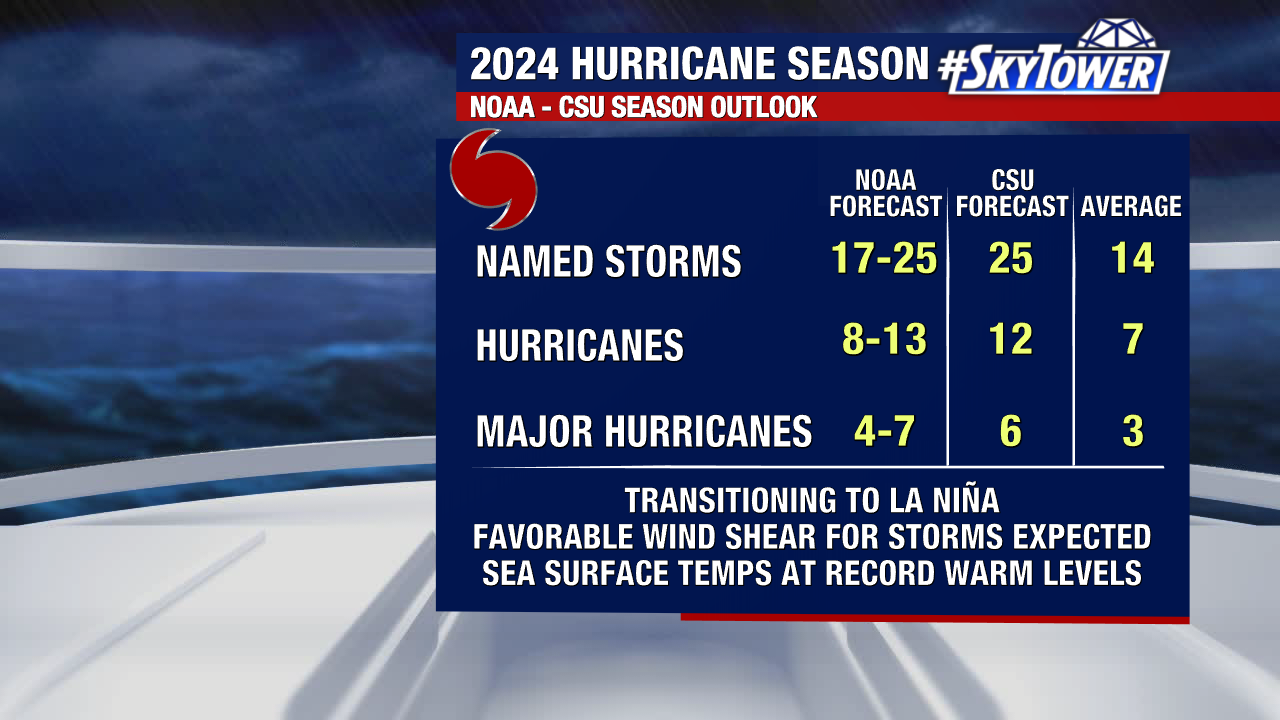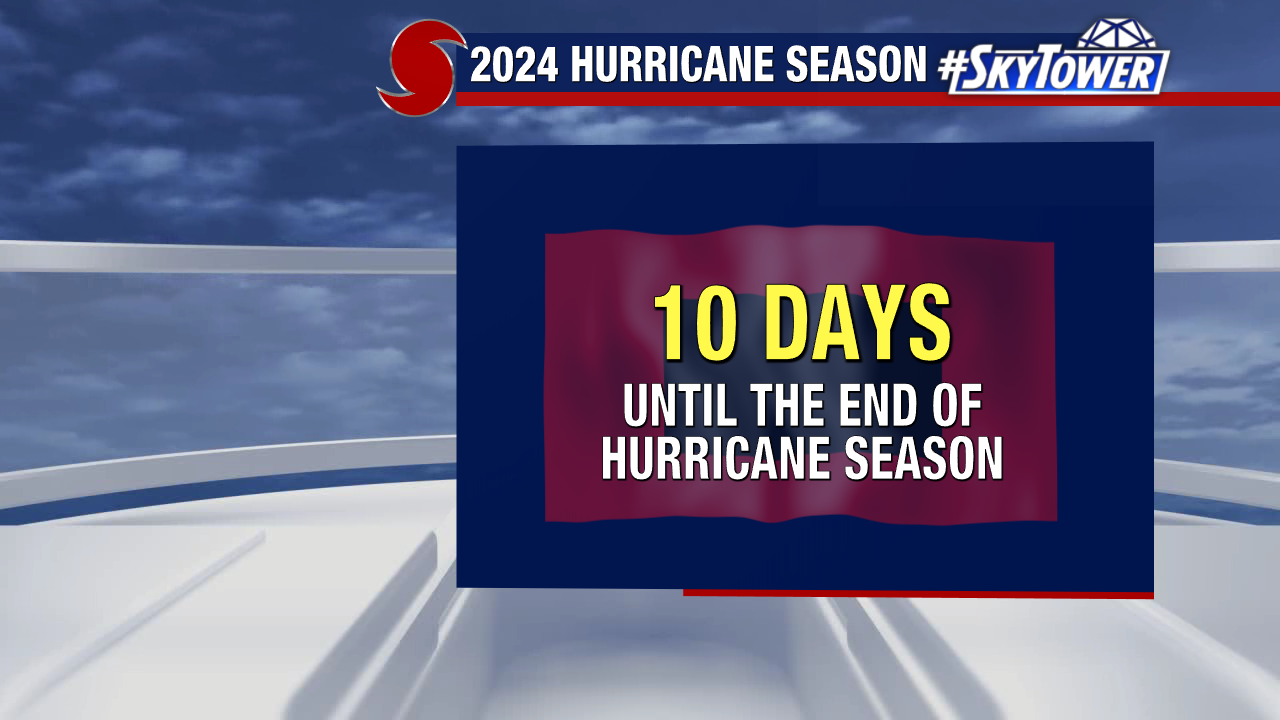This hurricane season was historic in many ways and an extremely active one, especially across the Gulf Coast where several storms made landfall.
We are closing out the season with a total of 18 named storms, 11 developing into hurricanes and 5 into major hurricanes. It was above average across the board.

It was a particularly destructive season for Florida with back to back storms taking aim at the state within two weeks. 3 hurricanes made landfall in Florida, which ties for the highest number of landfalls in a single season.
Hurricanes Debby, Helene and Milton make landfall within 9 weeks and all within 300 miles of each other.

We compare this to other busy seasons like 2004 when Hurricanes Charley, Frances & Jeanne hit Florida. We also saw impacts from Ivan in ‘04 but that hurricane made landfall in Alabama.
At the start of the hurricane season, NOAA predicted an above-normal year with up to 25 named storms, including 4 to 7 major hurricanes. CSU forecasters also called for an active season.

Heading into June, historic warm sea surface temperatures and the transition to La Niña drove the most aggressive early season forecast we had ever seen.
And the season lived up to it – becoming particularly active with a high number of landfalling storms.

Five hurricanes made landfall in the U.S. this season: Beryl, Debby, Francine, Helene, and Milton.
These all hit the Gulf Coast. Beryl made landfall in Texas, Francine in Louisiana, the other 3 in Florida.
Only two made landfall as major hurricanes: Category 4 Helene near Perry, FL and Category 3 Milton in Siesta Key, FL.
The season kicked off with a bang as Hurricane Beryl set several records as the first major storm of the season.

It become the strongest June hurricane, further strengthening into the earliest Category 5 on record. It also set a record as the easternmost hurricane to form in June and is the strongest hurricane to impact the southern Windward Islands.
After this historic early season storm, the tropics were eerily quiet during what is typically the most active part of the season. A strong layer of Saharan air dominated the Atlantic with a lull in tropical formation for most of July into August.
Hurricane Debby changed that, making landfall on August 8 near Steinhatchee, Florida with a second landfall near Bulls Bay, South Carolina.
Ernesto impacted the Lesser Antilles and Bermuda, followed by Francine’s Louisiana landfall.
Late September activity really ramped up. Hurricane Helene roared through the Gulf, bringing record storm surge to Florida’s west coast as it paralleled the state before landfall in the Big Bend on Sept 26.

The trail of destruction that followed was unprecedented. Parts of North Carolina near the Appalachians were hit with 30″ of rain. This caused a flooding event that wiped out entire towns and neighborhoods, causing a state emergency.
Still reeling from Helene, Florida quickly had to brace for Hurricane Milton tracking directly across the Gulf of Mexico towards the west coast. Milton made landfall in Siesta Key on October 9.

The storm produced an incredible amount of tornado warnings as Milton’s rainbands whipped across the state. Several tornadoes touched down and the state had a record number of warnings issued in a single day.

Milton was able to strengthen into the second Category 5 hurricane of the season. It became one of the strongest hurricanes on record based on wind speed. Winds were clocking in at 180mph, rivaling Hurricane Allen in 1980 which had a peak wind speed of 190mph.
Milton was a small storm so it was able to intensify rapidly – strengthening from a Category 1 to a Category 5. Milton’s winds went from 60mph to 180mph in only 36 hours.

There were only 3 names left unused this season. The 2025 Hurricane Season starts June 1. Check out the names ahead for the 2025 season.




